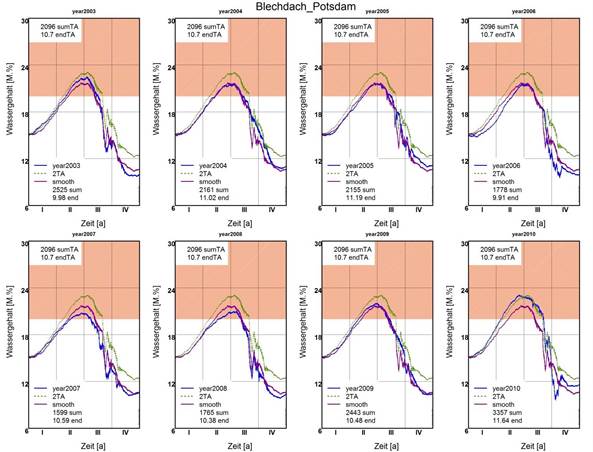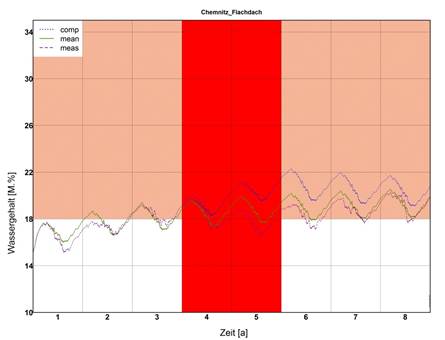

What effect does driving rain have on the outer fabric of a building? How high is the risk of condensation in its components? And how do hygrothermal conditions - i.e. humidity and temperature - inside a building correlate with the outdoor climate? Hygrothermal simulation tools can provide answers to these and other, related questions. However, in most cases the simulations are based on climate data originally compiled for use when dimensioning heating and air conditioning systems. These data focus more on temperature than on humidity, and are therefore less suitable when it comes to analyzing the hygrothermal properties of building components.
As part of the EnOB (Energy-Optimized Building) project, researchers at Fraunhofer IBP have developed a new set of hygrothermal reference years for Germany, which provide representative data on temperature, solar radiation, relative humidity and precipitation for defined climate regions. In other words, the typical climatic conditions in each region are described in terms of both thermometric and hygrometric data. For this purpose, based on the regions and reference locations used by the German National Meteorological Service (Deutscher Wetterdienst DWD), the researchers have divided Germany into ten regions to compile its own test reference year data.
As well as determining the average years, the researchers also identified critical years that can be combined with non-critical years to offer a representative picture of events. For instance, certain types of damage only occur as a result of single events, such as a spell of exceptionally cold weather - events that are absent in the average year. However, if a simulation were based purely on a succession of critical years, it would predict the failure of building components that have actually performed well in real-life conditions. By combining average and critical years, it is possible to create a realistic scenario. Figure 2 shows the comparison of simulated data and real measurements over a period of eight years consisting of three average years followed by two critical years and a further three average years. It illustrates how a representative scenario can be created that also takes into account the extreme weather events occurring in critical years.
To complement the set of hygrothermal reference years, the researchers have also developed local climate models. These enable the regional climate data to be adapted to specific local conditions - for instance, if the building being assessed is located next to a lake, on a hilltop or in the downtown district of a city. This new database provides planners with a comprehensive, application-specific and reliable source of data for analyzing the hygrothermal properties of building components.